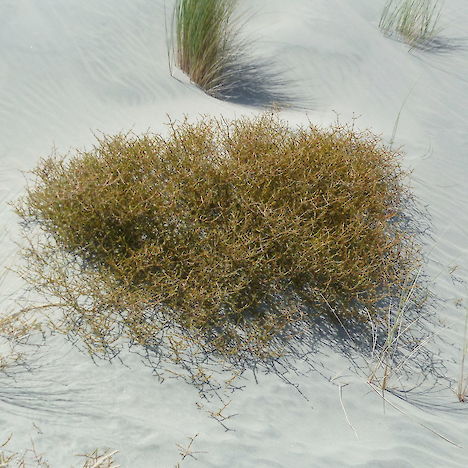Other names:
TātarahekeThreat category:
At Risk: Declining?Regions:
Northland, Auckland, Waikato, Bay of Plenty, Gisborne, Hawkes Bay, Manawatu-Wanganui, Taranaki, Wellington, Nelson-Tasman, Marlborough, Westcoast, Canterbury, Otago, SouthlandDistribution:
Coastal areas
Key Features
- Sand coprosma is a sprawling, yellowish, small-leaved shrub inhabiting coastal areas.
- The branchlets are orange or orange-yellow and often sparsely hairy when young.
- The leaves are narrow and small, in clusters of several leaves scattered along the branchlets.
- Flowers are small with male and female flowers on separate plants.
- The fruit is white.
Distribution and Habitat
- Coastal areas of North, South, Stewart and Chatham Islands, often on the landward side of sand dunes.
Threats
- Habitat modification and loss.
- Competition from marram grass (Ammophila arenaria) and other weeds.
Management Opportunities
- Survey for new locations.
- Mark known sites.
- Protect habitat.
- Collect seed, propagate, and reintroduce to appropriate sites.
- Ensure that forest owners are aware of potential habitats and can recognise the species.
Monitoring Options
- Check existing populations annually.
- Report new locations to DOC.
Further Information and Support
- Weed control - Department of Conservation, Regional Councils.
References
- New Zealand Plant Conservation Network (NZPCN). http://www.nzpcn.org.nz
- Poole & Adams (1994). Trees and shrubs of New Zealand. Maanaki Whenua Press, Lincoln.
- Wilson & Galloway (1993). Small-leaved shrubs of New Zealand. Manuka Press, Christchurch.



